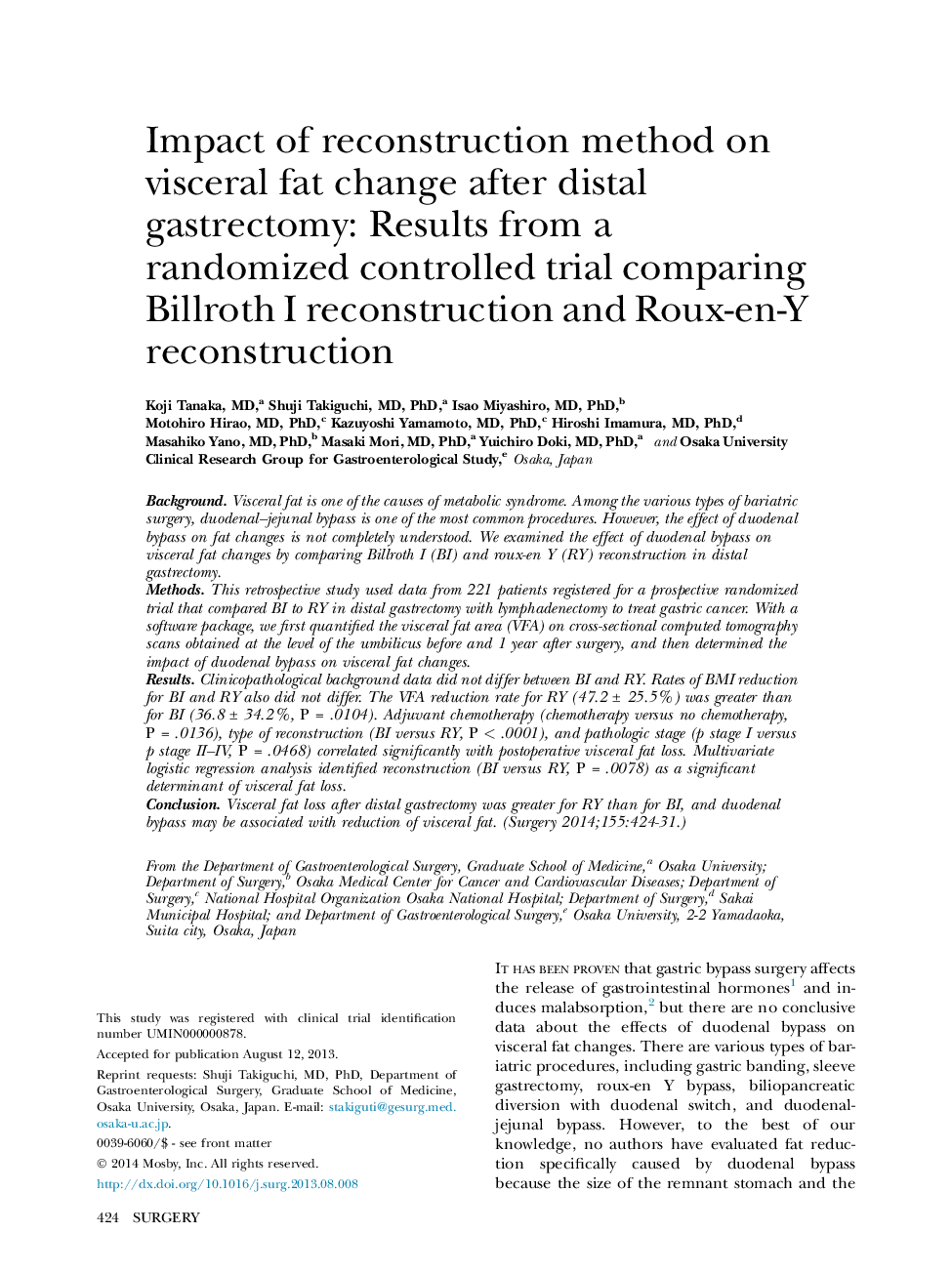| Article ID | Journal | Published Year | Pages | File Type |
|---|---|---|---|---|
| 6255565 | Surgery | 2014 | 8 Pages |
BackgroundVisceral fat is one of the causes of metabolic syndrome. Among the various types of bariatric surgery, duodenal-jejunal bypass is one of the most common procedures. However, the effect of duodenal bypass on fat changes is not completely understood. We examined the effect of duodenal bypass on visceral fat changes by comparing Billroth I (BI) and roux-en Y (RY) reconstruction in distal gastrectomy.MethodsThis retrospective study used data from 221 patients registered for a prospective randomized trial that compared BI to RY in distal gastrectomy with lymphadenectomy to treat gastric cancer. With a software package, we first quantified the visceral fat area (VFA) on cross-sectional computed tomography scans obtained at the level of the umbilicus before and 1 year after surgery, and then determined the impact of duodenal bypass on visceral fat changes.ResultsClinicopathological background data did not differ between BI and RY. Rates of BMI reduction for BI and RY also did not differ. The VFA reduction rate for RY (47.2 ± 25.5%) was greater than for BI (36.8 ± 34.2%, P = .0104). Adjuvant chemotherapy (chemotherapy versus no chemotherapy, P = .0136), type of reconstruction (BI versus RY, P < .0001), and pathologic stage (p stage I versus p stage II-IV, P = .0468) correlated significantly with postoperative visceral fat loss. Multivariate logistic regression analysis identified reconstruction (BI versus RY, P = .0078) as a significant determinant of visceral fat loss.ConclusionVisceral fat loss after distal gastrectomy was greater for RY than for BI, and duodenal bypass may be associated with reduction of visceral fat.
